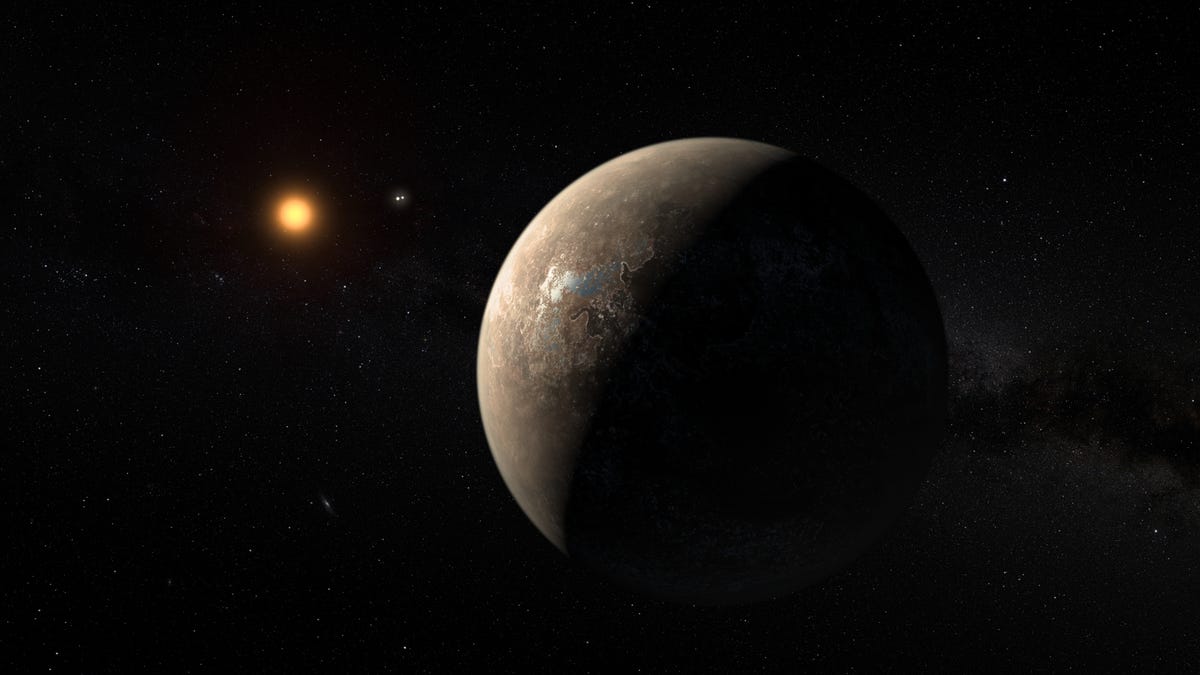Team that found Proxima b exoplanet looking for a neighbor
Proxima Centauri b is the closest world beyond our solar system that we know of, but scientists are checking to see if it's alone.

This artist's impression shows the planet Proxima b orbiting the red dwarf star Proxima Centauri, the closest star to the solar system.
Almost a year after introducing us to Proxima b, the same team continues to search for "Proxima c."
The discovery of Proxima b, a potentially habitable exoplanet around the closest star beyond the sun, was huge news last year. While the focus was on the confirmed existence of planet Proxima b, there were indications in the data that it might not be the only world orbiting the star Proxima Centauri, just over four light years away.
The Red Dots Campaign is a collaboration of several observatories and scientists with the specific goal of finding Earth-like planets around nearby red dwarf stars like Proxima Centauri. Proxima b is easily the team's biggest find so far, but it's also looking for alien worlds around Barnard's Star and other nearby suns while continuing to study the Proxima Centauri system.
And it looks like Proxima b might not be the only thing making its way around that system.
This graph of activity around Proxima Centauri shows the presence of Proxima b and perhaps Proxima c.
Observations of Proxima Centauri made it clear that Proxima b was orbiting every 11 days, but there's also something else that shows up regularly every 215 days or so. It was labelled as possible stellar activity, perhaps from Proxima Centauri's magnetic cycles, but the recurring blip might actually be another planet.
In a blog post Tuesday, Mikko Tuomi from Red Dots wrote that more observations of the star are needed to confirm that the repeating blip comes from the star itself.
"Lacking such a confirmation (of cyclical stellar activity) will strengthen the alternative hypothesis that the period of 215 days could be caused by planet 'c', a cold super-Earth with a minimum mass of some 3.3 times the mass of Earth, orbiting Proxima Centauri," Tuomi wrote.
Bolstering the case for another planet around Proxima Centauri, at least statistically, is research that says red dwarf stars typically have at least 2.5 planets orbiting them.
It's not really clear when or if the Red Dots Campaign will be able to confirm or rule out the existence of Proxima c. Fortunately, some big next-generation telescopes like the James Webb Space Telescope will be coming online in the next few years that should be able to help.
And of course, getting a better idea of what's orbiting our nearest stellar neighbors will also help us figure out if there's any activity on those worlds. The odds of aliens on hypothetical Proxima c don't seem good, as it's likely to be too cold. But our own solar system has taught us that frozen worlds like Enceladus and Europa can harbor heat beneath frozen shells.
In the end, it's really all about numbers: More planets around Proxima Centauri means more chances of finding E.T. there.
Crowd Control: A crowdsourced science fiction novel written by CNET readers.
Solving for XX: The tech industry seeks to overcome outdated ideas about "women in tech."

